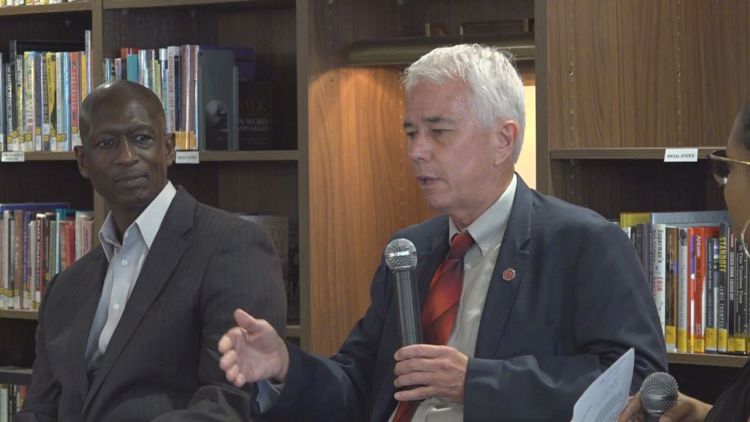MEMPHIS, Tenn. — Shelby County District Attorney Steve Mulroy held a discussion on research his office did focusing on Shelby County prosecutions and its implications for public safety.
The initiative was called, From Numbers to Narratives: Exploring Prosecution and Safety in Shelby County. The data walk exhibit was displayed at the Cossitt Library after previously going up at the National Civil Rights Museum.
In partnership with the Vera Institute, the study took a look at prosecution data from 2017 to 2023.
The study showed that during that time, black people where five times more likely to have cases filed than white people overall. That was especially true for gun cases, 9.5 times more likely, driving with a suspended license, 9.9 times more likely and unlawful possession of a weapon, 11.6 times more likely.
Mulroy said the study was done to help increase transparency, reduce the racial disparities and re-examine the best ways to keep people safe.
“We need to make sure that we do everything we can to improve the system, reform the the system and make it fair,” Mulroy said. “And we can’t turn our eyes away from the very real fact that there are racial disparities in the system and that is sewing some distrust on the part of the system that is preventing us from getting the public to cooperate with law enforcement in a way that we really need if we’re going to bend the curve on violent crime.”
The D.A. reiterated that they remain committed to fighting against violent crime, highlighting his V11 Fast Track Violent Crime Initiative as well as how making the system more fair can help restore public trust in it.
“We are taking this punishment very seriously,” Mulroy said. “We are focusing on violent crime, our V11 program is showing results and we are doing what we need to do to ensure the people that commit violent crime, who are actually a threat to public safety get the punishment they need.”
One of the ways they are working to do that are through diversionary programs, where rehabilitative interventions would be offered if a person does not have a violent record, does not have a history of violence and they are charged with possession of a weapon by a felon when the felony itself is not inherently violent.
“It’s going to keep people out of prison who don’t really represent a threat to public safety and don’t belong in prison, make them less likely to reoffend because we’re getting them the rehabilitative interventions they need,” Mulroy said. “But also, I think it will help with the racial disparities we saw.”



